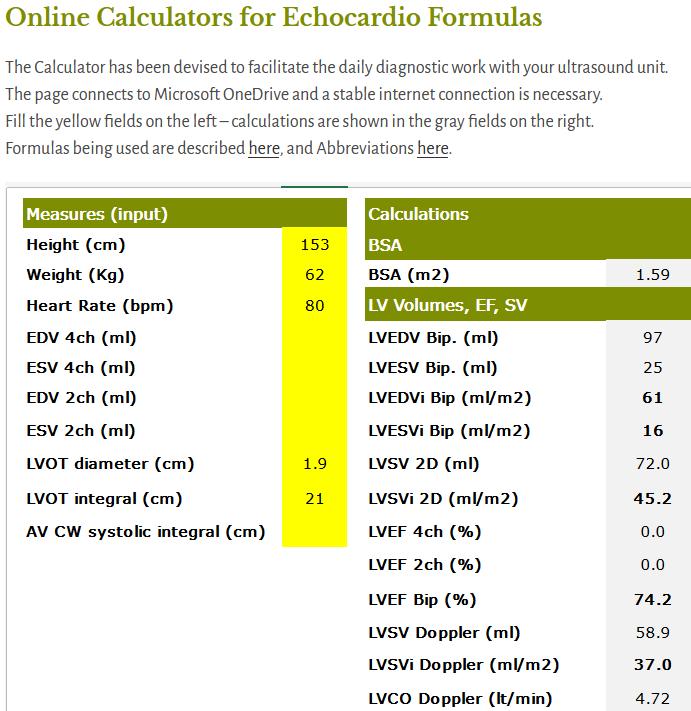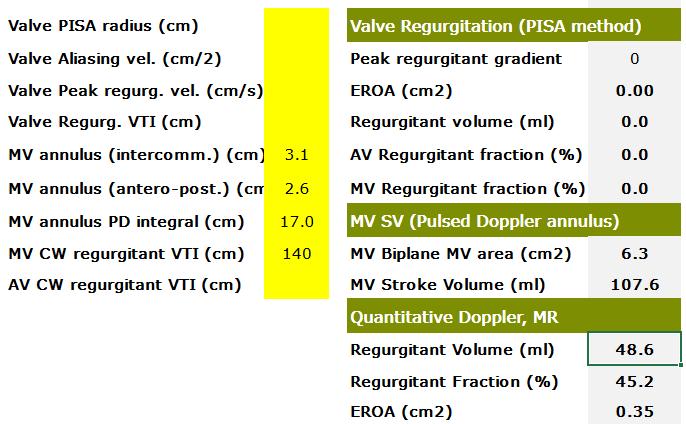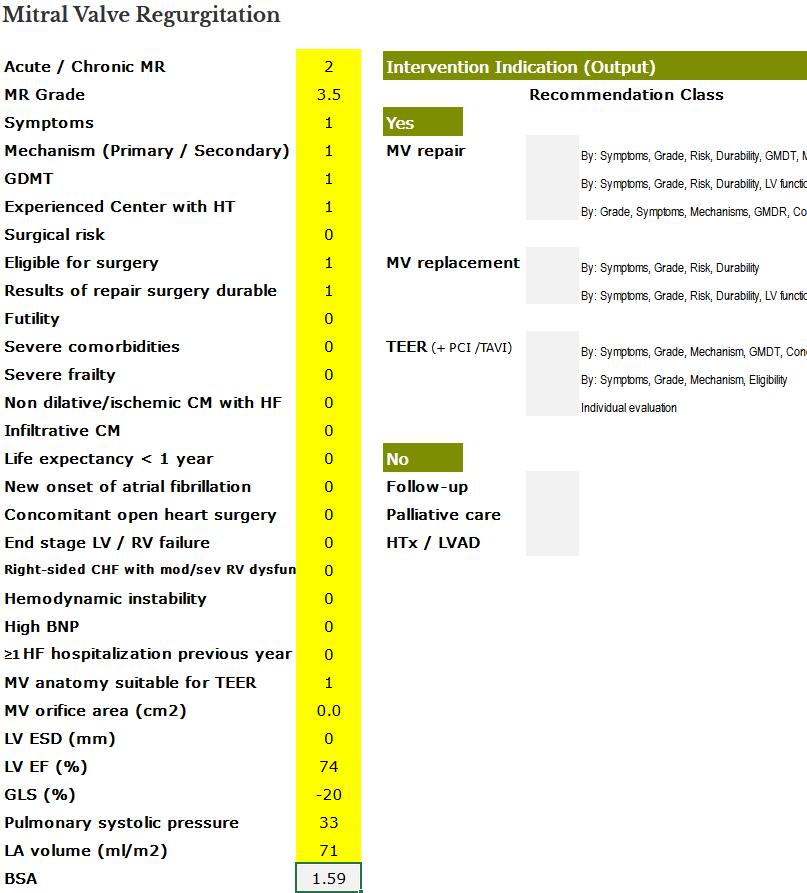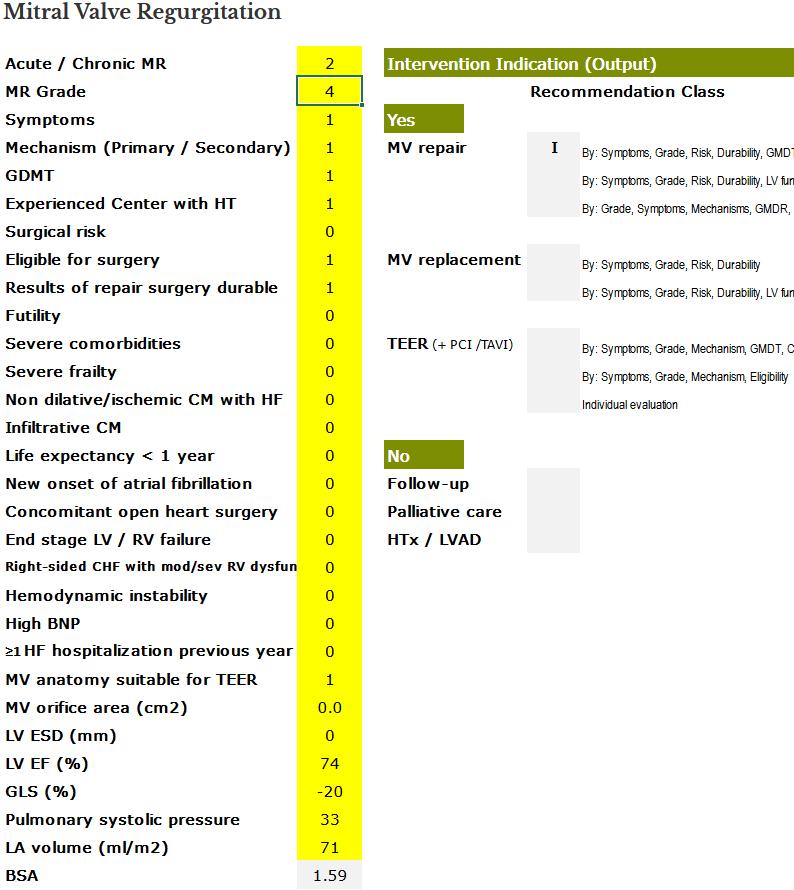[Page 4]
We can now use the online Calculator to calculate mitral Regurgitant Volume and Fraction.
We measure LVOT diameter and pulsed Doppler flow velocity integral (Figure 9, left panel), and mitral annulus inter-commissural and antero-posterior diameters and trans-annular flow velocity integral (Figure 10, left panel). Although the ASE recommendations allow a simplified assessment of the mitral annulus area as a circle, this method can lead to a significant overestimation of transmitral flow and thus of regurgitant volume. I personally recommend to use the (geometrically correct) ellipse formula to calculate the area of the mitral annulus.


Given the Criteria that define MR severity, the combination of: 1. regurgitant volume= 49 ml; 2. regurgitant fraction= 45 %; 3. Effective Regurgitant Orifice Area= 0.35 cm2 suggests a MR grade= 3.5 (moderate to severe).
We can then use the online Calculator for the current 2022 ESC Valve Surgery Indications Guidelines to determine the surgical indication for mitral valve repair in our patient. After we input the necessary information on the left panel (yellow area), we see that there is no indication for surgery (Figure 11, right panel). This follows the fact that MR is less than severe (moderate to severe). If we change the regurgitation score to severe (= 4), as in Figure 12, we obtain a Class I Recommendation for mitral valve repair.
At this point – given that the Guidelines should be tailored to the individual patient – the Heart Team decided to proceed to mitral valve repair considering: 1) the high expected success rate of the procedure in the Institution; 2) the presence of symptoms without other explanation; 3) the severe LA dilatation.
The mitral valve was repaired with a P3 resection, A3-P3 suture and placement of a #28 prosthetic annulus.

